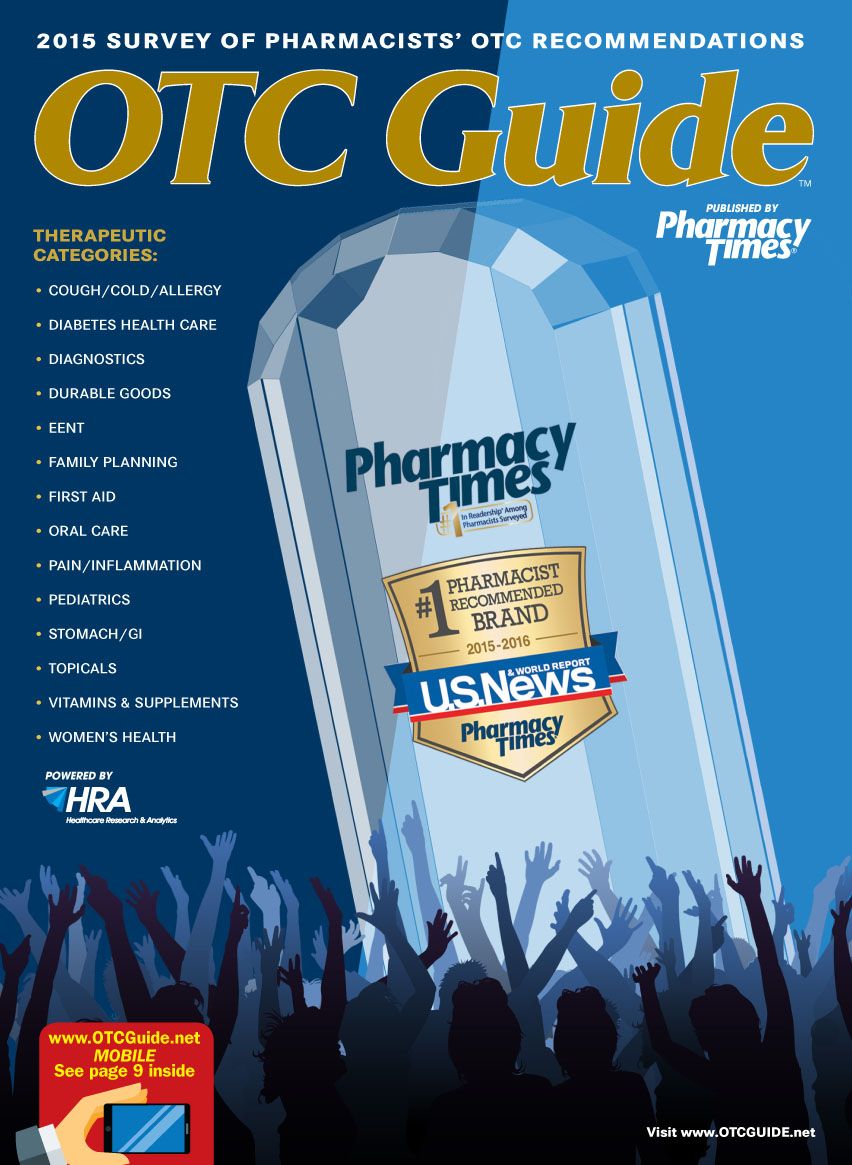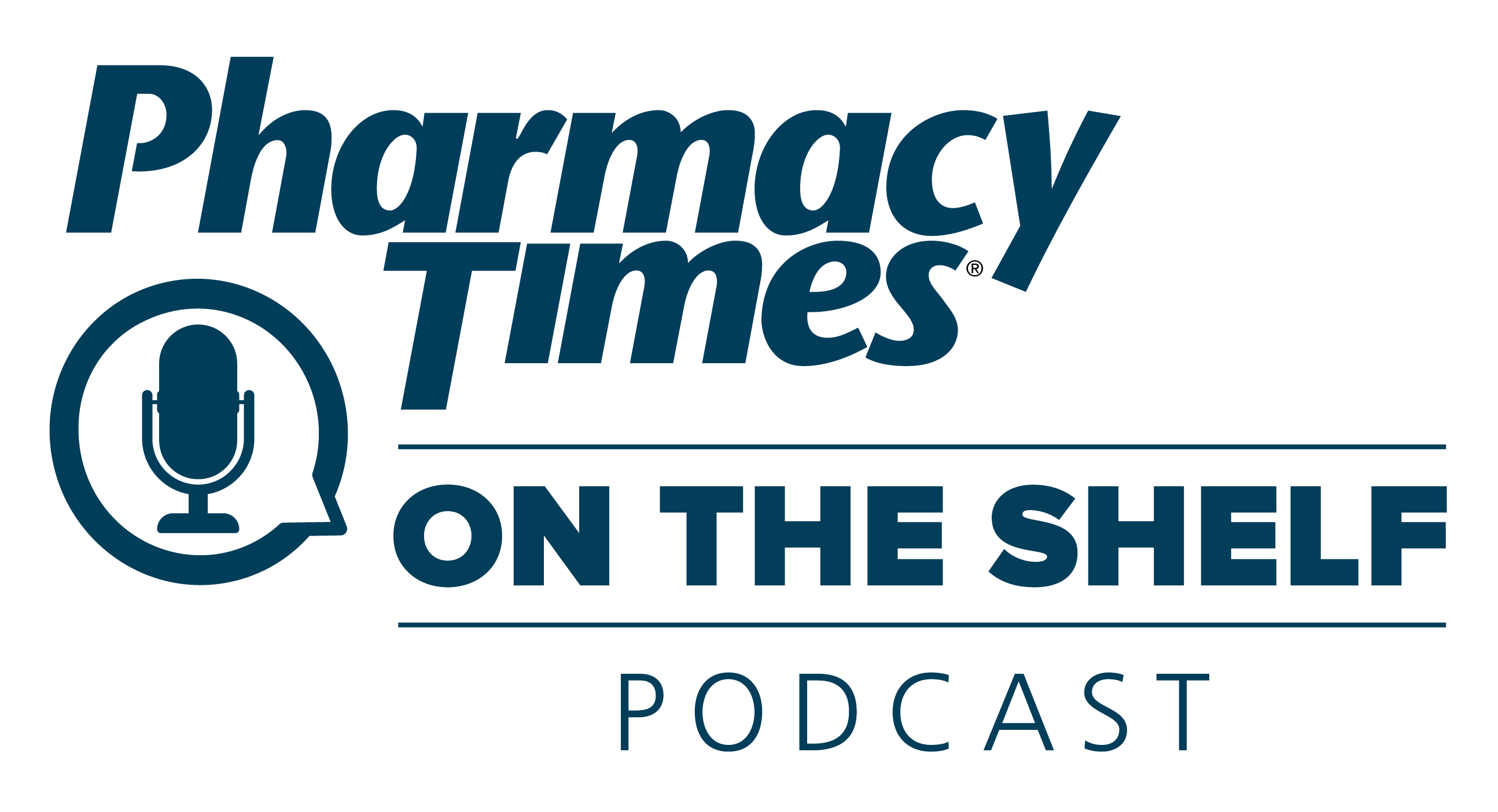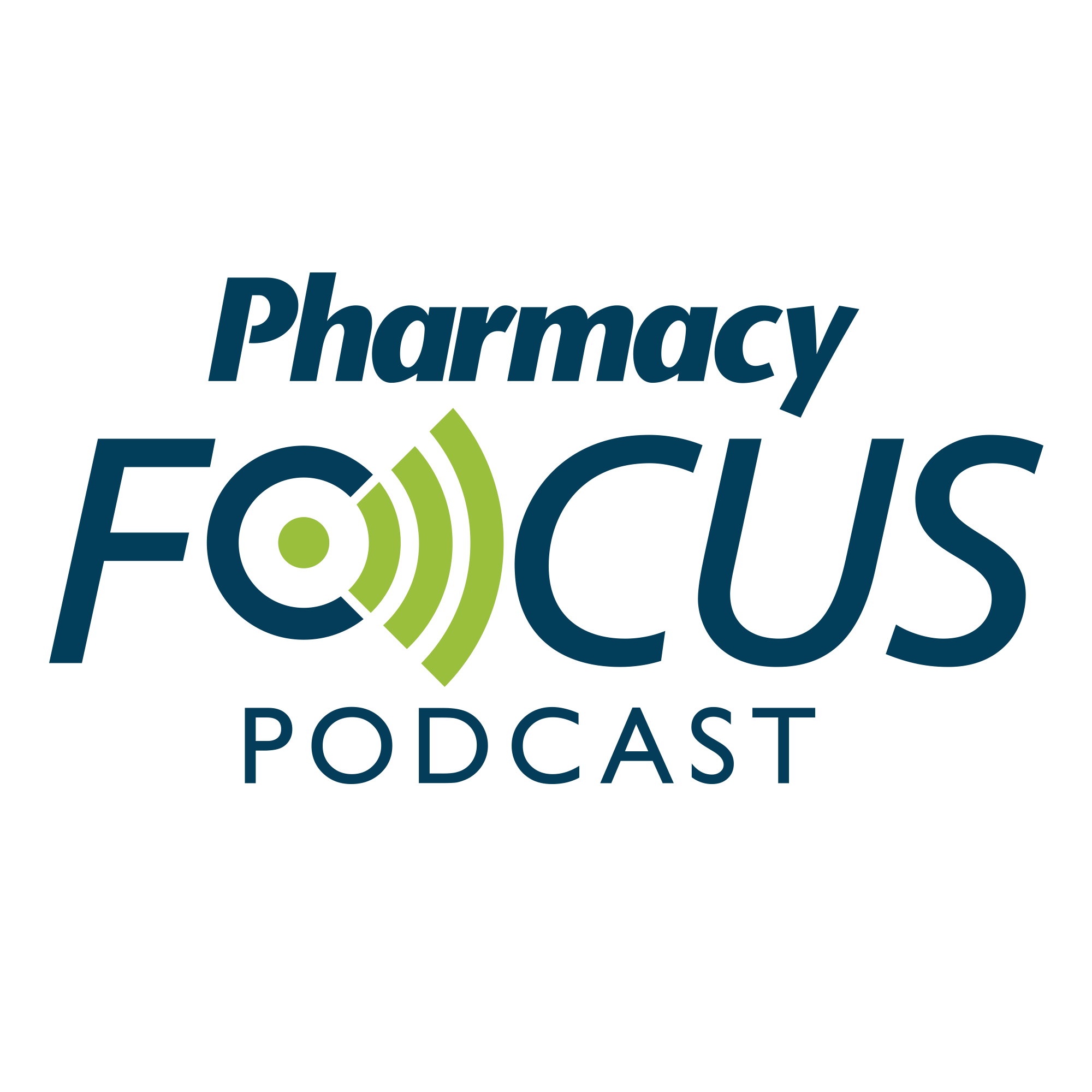Publication
Article
OTC Guide
OTC Relief for Allergies: Reducing Symptoms
Author(s):
Allergies are incurable, but OTC products can help patients function.
Allergies are incurable, but OTC products can help patients function.
Allergy sufferers of all sizes, shapes, and health statuses request help selecting OTC products. Some patients have comorbidities, some want to take something that will help them sleep, and others may be scratching remarkably ugly rashes or cannot tell if they have a cold, allergies, or both.
When counseling patients, pharmacists should follow these 4 major guidelines:
• Allergies are incurable, but OTC products can relieve symptoms and help patients function.
• Base your recommended course of therapy on each patient’s medical and medication histories, documented allergies, symptom severity, cost, and preferred dosing intervals.
• The active ingredients panel is the most important section of the box; pretty packaging is just a distraction.
• Patients may try several different products before finding one (or a combination) that works for them. Also, products can stop working over time.1,2
Most Common: Nasal Allergies
Approximately 60 million Americans— up to 40% of adults and children—suffer from seasonal or perennial allergic rhinitis, and its prevalence is increasing. 3-5 These patients have predictable complaints: frequent sneezing, rhinorrhea, postnasal drip, nasal congestion, loss of smell, headaches, earache or ear pressure, and red, itchy, swollen, or teary eyes. Patients also often report fatigue, drowsiness, and malaise.1,6 Some people are cursed with both types of rhinitis: baseline rhinitis throughout the year and exacerbated symptoms when specific pollens peak.7 Numerous nonallergic triggers also cause rhinitis, including hormones (eg, pregnancy, puberty, thyroid conditions), structural defects (eg, septal deviation, adenoid hypertrophy), lesions (eg, nasal polyps and neoplasms), and drugs (eg, angiotensin-converting enzyme inhibitors, aspirin and other nonsteroidal anti-inflammatory drugs, beta-blockers, clonidine, oral contraceptives, topical decongestants).6-9
Allergic rhinitis can lead to complications: otitis media, sinusitis, recurring sore throat, cough, headaches, disturbed sleep, sleep apnea, depression, anxiety, irritability, poor school performance, and impaired cognitive function are common.5-8 In addition, some children may develop delayed speech, altered facial growth, and dental problems.6-8 To avoid allergens, using environmental control measures is the best approach—a move that can be practically impossible if pollen or dust mites are the allergen.1,6 Patients should remember the following:
• Lowering the humidity level at home reduces mold growth.
• Checking local pollen and mold counts can identify high-risk periods in advance.
• Keeping windows closed in cars and at home when pollen and mold levels are high reduces exposure.
• Avoiding outdoor activity during peak pollen production (5:00 am to 10:00 am) is helpful.1,6,10
Treatment
Rinsing nasal cavities using isosaline irrigation is simple and safe.11 Four drug classes are used to treat nasal allergies: oral antihistamines, eye antihistamines, oral decongestants, and nasal spray decongestants.1,6
Pharmacists should educate patients that antihistamines and decongestants have numerous medication interactions and contraindications. Patients who have medical conditions sensitive to adrenergic stimulation (eg, hypertension, diabetes, coronary artery disease, prostatic hypertrophy, elevated intraocular pressure) should avoid decongestants.1
Antihistamines
Most patients prefer antihistamines for itching, sneezing, rhinorrhea, and dry cough. First-generation antihistamines (ie, sedating antihistamines including diphenhydramine and chlorpheniramine) are associated with drowsiness or sedation, impaired mental alertness, and anticholinergic effects.1 Secondgeneration OTC antihistamines (ie, nonsedating antihistamines such as cetirizine, fexofenadine, and loratadine) usually do not cause significant drowsiness. Patients should start antihistamines and mast cell stabilizers as soon as possible—before symptom onset (if they can anticipate them) or immediately thereafter.1
Oral Decongestants
For nasal or eustachian tube congestion or cough associated with postnasal drip, systemic or short-term topical nasal decongestants can help. Systemic phenylephrine or pseudoephedrine are popular, effective choices; however, they can cause insomnia, nervousness, and tachycardia.1 Using topical decongestants avoids the potential for systemic adverse effects (AEs), but can lead to rhinitis medicamentosa (rebound congestion) if used for more than 3 to 5 days.1 Combination products for allergic rhinitis are very popular and convenient if patients have multiple symptoms. However, if some symptoms resolve and patients fail to revert to a single drug product, they risk unnecessary drug use.1,10,12
Cromolyn Sodium
Cromolyn sodium nasal spray is available over the counter for patients 5 years and older. Patients use 1 spray in each nostril 3 to 6 times daily; they should start treatment at least 1 week before they expect seasonal symptoms. Cromolyn sodium’s most common AEs include nasal burning or stinging; the product has no known drug interactions.1,13
Ocular Allergies
When allergic rhinitis causes watery, itchy eyes, ocular combination products (eg, antihistamines pheniramine maleate and antazoline phosphate in combination with the decongestant naphazoline) can help. Common AEs include burning, stinging, and discomfort.8
Ketotifen fumarate 0.025% ophthalmic solution—a noncompetitive histamine1-receptor antagonist and mast cell stabilizer—is the sole OTC antihistamine ophthalmic product that relieves ocular itching without a decongestant. 8,14,15 Ketotifen can be used in individuals 3 years and older for itchy eyes due to exposure to ragweed, pollen, grass, animal hair, and dander; it is classified as Pregnancy Category C (ie, the possible benefits may warrant use of the drug in pregnant women despite potential risks).14,15 Ketotifen’s advantages include twice-daily dosing and quick action. Common AEs include headache, dry eyes, and rhinitis.8,14,15 Patients should apply ketotifen before their contacts and then wait at least 10 minutes to put in their lenses.14,15
Skin Allergies
Skin allergies can be serious and require emergency care; refer affected patients immediately. Symptoms include itching, rash, oozing blisters, swelling, and redness. Patients who present with mild to moderate contact dermatitis, hives, and allergic dermatitis can use OTC products. First- or second-generation systemic or topical antihistamines are preferred with skin allergies. Hydrocortisone-containing creams, calamine lotion, oatmeal baths, and moisturizers can also provide relief.16
Endnote
Before recommending any OTC product, pharmacists should always determine if self-treatment is appropriate and refer individuals to seek further medical evaluation when warranted.12 Individualizing treatment is easier if pharmacists are familiar with various OTC formulations. These come in the form of liquids, chewable tablets, oral disintegrating tablets or medicated thin strips, and immediate- or sustained-release capsules, tablets, or caplets. A subset of patients may need alcohol-free, sugar-free, or dye-free products.
Ms. Wick is a visiting professor at the University of Connecticut School of Pharmacy.
References
- Scolaro K. Disorders related to colds and allergy. In: Berardi R, Newton G, McDermott JH, et al, eds. Handbook of Nonprescription Drugs. 16th ed. Washington, DC: American Pharmacists Association; 2009:189-200.
- More D. When allergy medicines stop working. About.com website. http://allergies.about.com/b/2011/05/12/when-allergy-medicines-stop-working.htm. Updated December 15, 2014. Accessed February 27, 2015.
- Allergy statistics. American Academy of Allergy Asthma and Immunology website. http://aaaai.org/media/statistics/allergy-statistics.asp#allergicrhinitis. Accessed February 27, 2015.
- Bloom B, Cohen RA, Freeman G. Summary Health Statistics for U.S. Children: National Health Interview Survey, 2011. Hyattsville, MD: Centers for Disease Control and Prevention National Center for Health Statistics; 2012. www.cdc.gov/nchs/data/series/sr_10/sr10_258.pdf. Accessed February 27, 2015.
- Salo PM, Arbes SJ Jr, Jaramillo R, et al. Prevalence of allergic sensitization in the United States: results from the National Health and Nutrition Examination Survey (NHANES) 2005-2006. J Allergy Clin Immunol. 2014;134(2):350-359. doi: 10.1016/j.jaci.2013.12.1071.
- Wheatley LM, Togias A. Clinical practice. Allergic rhinitis. N Engl J Med. 2015;372(5):456-463. doi: 10.1056/NEJMcp1412282.
- Allergic rhinitis. American Academy of Allergy, Asthma and Immunology website. http://acaai.org/public/advice/rhin.htm. Accessed February 27, 2015.
- Fiscella R, Jensen M. Ophthalmic disorders. In: Berardi R, Newton G, McDermott JH, et al, eds. Handbook of Nonprescription Drugs. 16th ed. Washington, DC: American Pharmacists Association; 2009:526-528.
- Rhinitis (hay fever). American Academy of Allergy, Asthma and Immunology website. http://aaaai.org/patients/topicofthemonth/0307/. Accessed February 27, 2015.
- Solelhac G, Charpin D. Management of allergic rhinitis. F1000Prime Rep. 2014;6:94. doi: 10.12703/P6-94.
- Hermelingmeier KE, Weber RK, Hellmich M, Heubach CP, Mösges R. Nasal irrigation as an adjunctive treatment in allergic rhinitis: a systematic review and meta-analysis. Am J Rhinol Allergy. 2012;26(5):e119-125. doi: 10.2500/ajra.2012.26.3787.
- Williams A, Scadding G. Is reliance on self-medication and pharmacy care adequate for rhinitis patients? Int J Clin Pract. 2009;63(1):98-104. doi: 10.1111/j.1742-1241.2008.01944.x.
- NasalCrom [product information]. Nasalcrom website. http://nasalcrom.com/en/~/media/files/nasalcrom/nasalcromproductinformation.pdf. Accessed February 27, 2015.
- Zaditor [product information]. Zaditor website. www.zaditor.com. Accessed February 27, 2015.
- Alaway [product information]. Alaway website. www.alaway.com. Accessed February 27, 2015.
- Wick JY. Drug-induced rash: nuisance or threat? Consult Pharm. 2013;28(3):160-166. doi: 10.4140/TCP.n.2013.160.

FDA Approves Dupilumab, Marking First Targeted Therapy in a Decade for Chronic Spontaneous Urticaria






